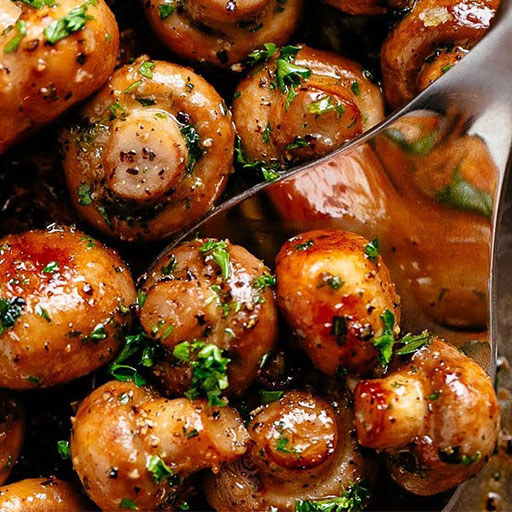Call us to place your order +254 721 510369 | +254 736 325749
Mushroom Magic: Harnessing the Nutritional and Medicinal Power of White Button Mushrooms
Mushrooms can provide more than just taste and texture for our meals–they actually have a surprisingly high nutritional value as well as an array of medicinal properties, bringing many health benefits when consumed regularly.
Indeed, incorporating white button mushrooms (Agaricus bisporus) into our diet effectively helps with weight loss as well as prevention of certain types of cancer (such as prostate, breast cancer ), possibly due to their high contents of selenium.
The white mushroom has a special carbohydrate that stokes the metabolic fire and maintains blood sugar levels. A strong metabolism means more burned fat. Three ounces per day for four to six weeks has been said to yield substantial weight loss, if accompanied with regular exercise and overall healthy eating.
Agaricus bisporus is low is calories and carbohydrates, low in sodium, yet rich in fiber, both soluble and insoluble. Whether your concern is lowering cholesterol levels and risk of heart disease, type 2 diabetes, colon cancer, diverticulosis or general bowel health, fiber is one of the dietary keys.
Getting enough fiber has also been linked to a lower Body Mass Index, an indicator of obesity, as well as being a potential factor in weight loss and maintenance.
The soluble fiber in Agaricus is mainly beta-glucans and chitosans, which are components of the cell walls. Soluble fiber has been shown to help prevent and manage cardiovascular disease by lowering total and LDL cholesterol levels. It also helps regulate blood sugar levels.
Promoting regularity and good bowel health is the main role of the insoluble fiber found in mushrooms. It also helps slow digestion and adds satiety or staying power to foods. When fiber-rich foods are chosen, the diet is lower in energy density and has more volume than a low-fiber diet.13 More fiber means less room for high-fat, high-calorie choices which can translate into weight loss and healthy weight maintenance.
Recommendations for fiber consumption for adults generally fall in the range of 25 to 35 grams per day. Forchildren older than 2 years of age, their ‘age plus 5 grams’ is a guide to how much fiber they should get per day.
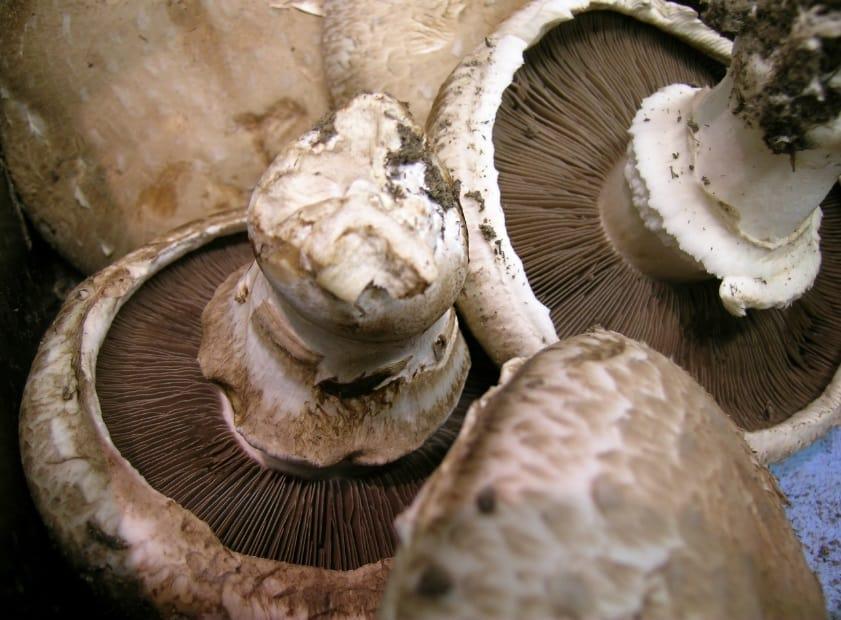
There is some evidence that beta-glucans offer anti-cancer potential. A diet high in fiber may have a protective role in preventing breast and bowel cancers. Research conducted on mushroom polysaccharides yielded results that suggest that consumption of white button mushrooms may increase innate immunity to tumors and viral infections.
In groundbreaking animal and lab research conducted at the Jean Mayer USDA Human Nutrition Research Center on Aging (HNRCA) at Tufts University, scientists have now documented how WBMs boost the immune system by increasing the production of proteins that fight disease-causing pathogens. The research team, which included HNRCA director Simin Meydani and his colleague, Dayong Wu, from the HNRCA Nutritional Immunology Laboratory, discovered the mushrooms have a positive impact on immune system cells classified as dendritic cells.
This is important because dendritic cells (DCs) can make white blood cells known as T cells that are crucial to a strong and healthy immune system. Dendritic cells recognize and then deactivate or destroy invading microbes such as bacteria and viruses or antigens (any substances that cause the immune system to respond). What’s more, they may play a role in fighting cancer. .
The HNRCA researchers found that the immune system boosting effect of white button mushrooms was related to dosage — the more mushrooms, the more pronounced the immune response.
Another group of scientists at the City of Hope’s Beckman Research Institute in Duarte, California, published a study in Cancer Research that suggests consuming 100 grams of WBMs per day could suppress breast tumor growth in women.
The human metabolism relies on a healthy dose of protein, fiber and vitamin B to keep it functional and robust. Mushrooms rank high in all three of these metabolism-supporting nutrients.
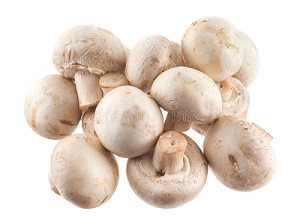
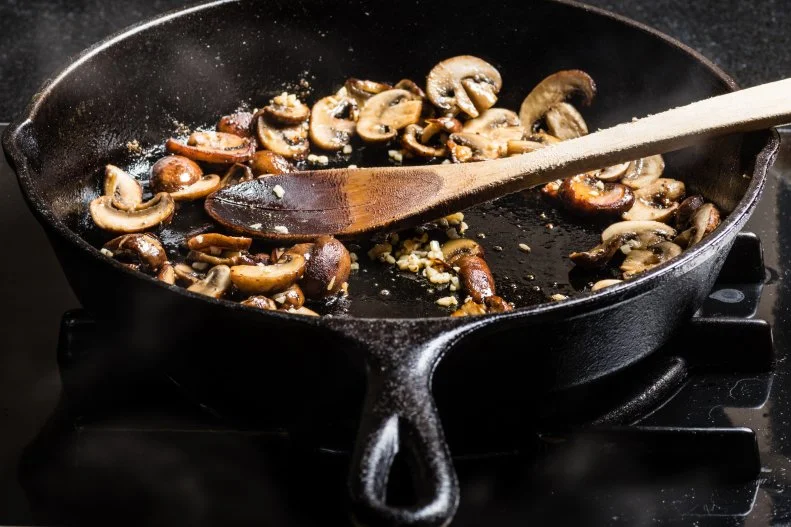
Heart Health Benefits
Heart disease is a leading cause of death throughout the world, but consuming button mushrooms can keep you from becoming another statistic. A major risk factor for heart disease is atherogenesis, which is the formation of plaque on arterial walls, which causes atherosclerosis and hardening of the arteries. Researchers at Arizona State University tested the effects of button mushrooms on the human endothelial cells in a test tube. The results of their study, published in the July 2010 issue of “Nutrition Journal,” show that button mushrooms reduce inflammation in arterial cells and prevent white blood cells from sticking to arterial walls. The researchers conclude that consuming button mushrooms may be a means to prevent heart disease.
Immune System Benefits
Specific cells in the body, referred to as natural killer cells, respond rapidly to foreign invaders such as viruses or cancer cells. Their rapid response is crucial to the immune system, as it helps the body fight disease. The June 2007 issue of the “Journal of Nutrition” reports that eating button mushrooms can boost the immune system by increasing the activity of natural killer cells. Although they do not fully understand how, scientists believe that it is the polysaccharide content of the mushrooms that is responsible for their immune-boosting ability.
Anticancer Benefits
Button mushrooms protect the body from various cancer cell lines. In June 2010, the department of plant pathology at Penn State released a report stating that button mushrooms have been found effective at treating breast, colon and prostate cancers. According to a study in the December 2006 issue of “Cancer Research,” eating one 1/2 cup of button mushrooms a day can stop the growth of breast cancer tumors. A healthy woman may eat less than 1/2 cup to greatly reduce the risk of developing breast cancer.
Nutritional Benefits
Button mushrooms contribute to the recommended daily intake of several vitamins and minerals. The USDA reports that mushrooms contain high amounts of copper, which is needed to produce blood cells and maintain heart health. Additional nutrients are vitamins C, D and B; and the minerals selenium, iron, magnesium, phosphorous, potassium and zinc. When cooked, most of the nutrient content of mushrooms remains the same, while some nutrients lose between 5 and 20 percent of their value.
Vitamins:
Vitamin C : White mushrooms are a better source of vitamin C than crimini mushrooms. Eating a 100 g serving of white button mushrooms adds 4 percent of your recommended daily intake of vitamin C to your diet. Eating the same amount of crimini mushrooms does not add any vitamin C to your diet.
Four to five medium sized white mushrooms (100 g) make an important contribution to your Daily Values (DV) of:
Riboflavin (Vitamin B2): Riboflavin is an essential enzyme required for the metabolism of carbohydrates, amino acids and lipids.2 It also supports antioxidant protection.1
Niacin (Vitamin B3): Niacin acts as a co-enzyme in the metabolism of carbohydrate and fatty acids, and is required for energy metabolism.
Pantothenic Acid (Vitamin B5) : Pantothenic Acid has numerous essential roles in energy metabolism and fatty acid metabolism.
Vitamin B6 : Vitamin B6 helps produce body chemicals including insulin, hemoglobin and antibodies that fight infection.
Thiamin (Vitamin B1) : Thiamin plays an essential role in carbohydrate metabolism and neural function.3
Folate : Folate builds new body cells with DNA and RNA, and it works with vitamin B12 to form hemoglobin. It works with vitamin B12 to form hemoglobin in red blood cells. It prevents megaloblastic anemia. Folate is essential for lowering the risk of neural tube defects such as spina bifida in developing fetuses.
Vitamn D ::While fresh Agaricus bisporus only contains 40 IU of vitamin D as ergocalciferol (vitamin D2),our dry Agaricus , which have been exposed to UV light, have increased their contents of ergocalciferol immensely making them an extremely rich source of this vitamin.
Indeed studies have established that mushrooms that have been exposed to ultraviolet (UV) light contain large amounts of vitamin D2. Mushrooms, when exposed to UV light, convert ergosterol, a chemical found in large concentrations in many mushrooms, to vitamin D2. This is similar to the reaction in humans, where Vitamin D3 is synthesized after exposure to UV light

Minerals : Four to five medium sized white mushrooms (100 g) provide important minerals, essential for a healthy body and active lifestyle, such as
Copper : Copper is an essential micronutrient that plays a role in making hemoglobin. It is also involved in energy production. Copper is one of the less talked about minerals that is essential to the body, but that the body cannot make on its own. Copper has properties that help protect our cardiovascular system, and just one small serving of mushrooms contains more than 20 percent of the copper we need daily
Selenium : Selenium acts as an antioxidant with vitamin E. Agaricus bisporus are an excellent source of the antioxidant Selenium which works with vitamin E to protect cells from damaging free radicals. Some studies also indicate that antioxidants are some of the best nutrients for preventing and fighting cancers. Like almonds, mushrooms are becoming more popular for their cancer-fighting and disease protecting properties
Potassium : Potassium helps maintain blood pressure, and regulates fluid balance in body cells. It is important for muscle contraction and transmission of nerve impulses. Most people think bananas are the high potassium food, but it may surprise you to learn that mushrooms out rank bananas on the potassium chart. Potassium helps the body process sodium and lower blood pressure. So people with hypertension or a high risk of stroke can enjoy tremendous health benefits from a regular dose of mushrooms in their diet.
Phosphorus : Phosphorus is a major component of bones and teeth. A component of compounds which regulate cell growth, repair and pH.
Iron : About 70% of iron is found in hemoglobin, about 25% is stored in liver, spleen and bone. A component of numerous enzymes.
Zinc : Zinc is a component of many enzymes, proteins and insulin and has an immune factor. It promotes cell reproduction, tissue growth and repair.
Magnesium : Macronutrient with 50% found in bone and the other 50% almost entirely inside body cells. Magnesium serves as an important part of more than 300 enzymes responsible for regulating many body functions including energy production, making body protein and muscle contraction. It also helps maintain nerve and muscle cells.

Button Mushrooms Calories and Nutrition per Serving (1 Serving=50g):
| Calories | 7 |
| Protein | 1.2 |
| Carbohydrate | 0.2 |
| Fat | 0.2 |
| Fibre | 0.6 |
Calories (with Percentage) for each Nutrient for 100g of Button Mushrooms:
Carbohydrates: 13,3%
Fat 26,7%
Protein: 60%
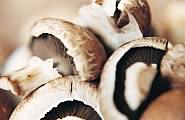
| See the table below for in depth analysis of nutrients: Button mushroom (Agaricus bisphorus), fresh, Nutritive value per 100 g. (Source: USDA National Nutrient data base) | ||
| Principle | Nutrient Value | Percentage of RDA |
| Energy | 22 Kcal | 1% |
| Carbohydrates | 3.26 g | 2.5% |
| Protein | 2.18 g | 4% |
| Total Fat | 0.34 g | 1% |
| Dietary Fiber | 1 g | 3% |
| Vitamins | ||
| Folates | 17 μg | 4% |
| Niacin | 3.607 mg | 23% |
| Pantothenic acid | 1.497 mg | 27% |
| Pyridoxine (B-6) | 0.104 mg | 8% |
| Riboflavin | 0.402 mg | 31% |
| Thiamin | 0.81 mg | 7% |
| Vitamin A | 0 IU | 0% |
| Vitamin C | 2.1 mg | 3.5% |
| Vitamin D | 7 IU mg | 1% |
| Vitamin E | 0 mg | 0% |
| Vitamin K | 0 μg | 0% |
| Electrolytes | ||
| Sodium | 5 mg | 0.5% |
| Potassium | 318 mg | 7% |
| Minerals | ||
| Calcium | 3 mg | <1% |
| Copper | 0.318 mg | 35% |
| Iron | 0.50 mg | 6% |
| Magnesium | 9 mg | 2% |
| Manganese | 0.047 mg | <1% |
| Phosphorus | 86 mg | 12% |
| Selenium | 9.3 μg | 17% |
| Zinc | 0.52 mg | 15% |
Selection and storage to preserve their nutritional value
Button mushrooms are available year-round in the markets. Select bright, clean mushrooms with firm, fleshy caps. Avoid those with discoloration, black spots, shriveled, bruised, and dry. Do not purchase those with a wet, slimy or slippery surface as they are out the flavor.
Button mushrooms can also be available in cans in supermarkets. Look for the brand, authenticity, and validity periods before buying one.
Button mushrooms are easily perishable. When stored properly, they may remain fresh for 3-5 days. Once at home, unseal the plastic wrap, place them in a paper bag or arrange inside an absorbent paper towel where they remain fresh for three days. Vacuum-sealed packs will continue to be safe for up to 14 days inside the refrigerator. Sliced mushrooms go bad early.
You can definitely make a difference in the health benefits you get from mushrooms by being extra careful with the temperature at which you store them. A recent study looked at color and texture changes in mushrooms over a 6-8 day period, including color changes that were associated with the mushrooms’ phytonutrient content (discoloration was related to a reduction in these important nutrients). As temperatures moved closer and closer to room temperature (the researchers stopped at 59°F/15°C in their study), discoloration and hardening became more and more problematic. Prevention of discoloration and hardening required the researchers to take the temperature down all the way to 38°F/3°C over this 6-8 day period. Since 38°F/3°C is great temperature setting for your home refrigerator, what we’re talking about here is careful refrigeration of mushrooms as soon as you’ve arrived back home from the grocery store. Leaving mushrooms out on the countertop is worth avoiding, and you never want to store them even temporarily in a cabinet.

Preparation and serving methods
Gently brush them using a soft brush or rub using a soft cloth to remove any surface peat, dirt. Peeling is not necessary as it makes them lose flavor. If the mushrooms are very dirty, rinse them in cold water for few seconds just before using them in recipes.
Cleaned mushrooms can be used whole, in cubes or slices as you may desire in the cooking. They can be eaten raw in salads.
Here are some serving tips:
- Finely sliced mushrooms can be added to soups.
- Freshly diced mushrooms added in stews, in stir-fries with chicken, and seafood.
- Large button mushrooms (portobello) can be employed for stuffing, grilling, and baking.
- Fine sliced, diced buttonhead are a common featuring ingredients in pizza, pasta, pastry, and potpie preparations.

How to cook them:
High-heat cooking (think searing or roasting) is the best way to bring out mushrooms’ meaty, savory quality. But they aren’t the best way to preserve their antioxidant content. A 2016 study found microwaving and grilling are the best ways to cook mushrooms without slashing their antioxidant power.
- Bake the button open cups at 350 for 15-20 minutes and sub them in for the beef next time burger night rolls around. You can also use them in place of sandwich meat.
- Add chopped button mushrooms to savory dishes like pastas and soups. Or saute them in olive oil for 10 minutes, then toss them in with your morning egg — or egg white – scramble.
- Sauté sliced mushrooms in butter, olive oil, and chicken stock until they’re tender, about 15 minutes. Any mushrooms will do, but a white button / oyster mushroom mix is nice. Try add-ons like garlic and shallots.
Mushroom Pizza
- Let a mature “umbrella” Agaricus serve as your pizza crust. Wash the mushroom and remove its gills. Broil the caps upside down in a muffin pan for 5-10 minutes. Spread sauce inside and cover with grated mozzarella and other toppings like olives, cherry tomatoes, or pineapple if that’s how you roll. Broil 5 more minutes, or until the cheese starts to melt.
Our Button mushrooms are organically grown. Additionally their content of vitamin D is naturally enhanced after harvest by submitting them to the sun’s ultraviolet rays under controlled conditions
They come packed in 250 gr. punnets.
Orders are taken 24 to 48 hours in advance. Cost of delivery within Nairobi will depend on the distance from our premises. Please feel free to consult us.
—————————————————————————————————————————————–
For more information on the amazing health benefits derived from regular consumption fo Button mushrooms tune to:
Disclaimer:
This content is strictly the opinion of its author and is meant for informational and educational purposes only. It is not intended to provide medical advice or to take the place of medical advice , diagnosis or treatment from a personal physician.
Readers of this content are advised to consult their doctors or qualified health professionals regarding specific health questions. Neither the author nor publisher of this content takes responsibility for possible health consequences of any person or persons reading or following the information in this educational content.
All readers of this content, especially those taking prescription or over-the-counter medications, should consult their physicians before beginning any nutrition or supplement or lifestyle program.
————————————————————————————————————————————–


